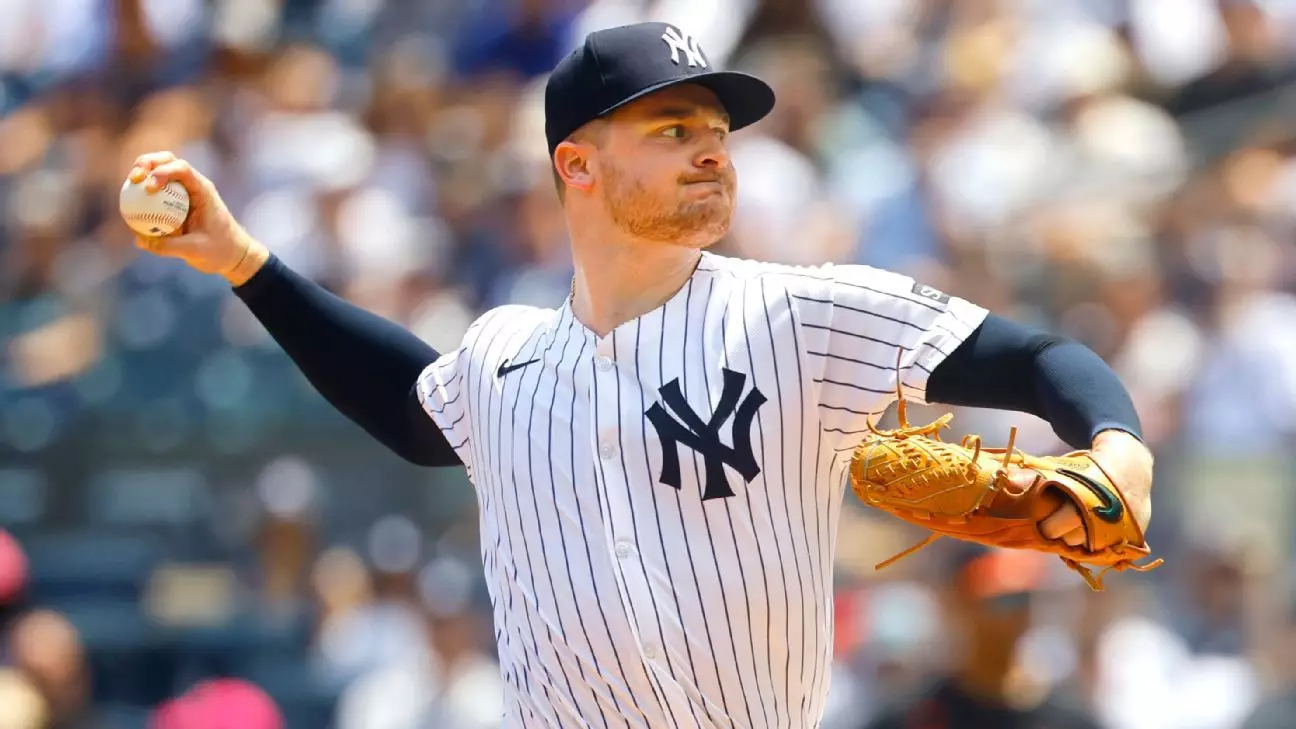The recent announcement of Clarke Schmidt’s likely Tommy John surgery represents more than just a setback for one pitcher—it exposes a troubling pattern within the Yankees’ approach to player management and team resilience. For years, the franchise has been caught in a cycle of heavy reliance on a limited pool of starting pitchers, often neglecting the inherent vulnerabilities that come with overconfidence in medical and developmental strategies. Schmidt’s injury, especially the recurrence of a procedure he underwent in 2017, underscores the perils of banking on young talent without sufficient depth or preventative care. It’s a stark reminder that neck-deep within the modern game lies a dangerous tendency to dismiss long-term safeguards in favor of immediate results.
The Yankees have historically exhibited a kind of hubris—believing that their talent pool, bolstered by signs of promise and past performances, can sustain sustained elite performance. This mindset, however, is fundamentally flawed when it ignores the biological limits and injury risks faced by pitchers. Schmidt’s case, compounded by the recent loss of Gerrit Cole and the injury struggles of Luis Gil and Ryan Yarbrough, paints a picture of a team unprepared for adversity. It’s a clear sign that talent, no matter how promising or seasoned, cannot be a substitute for robust injury prevention strategies or versatile roster planning.
Overdependence on Star Power and Its Consequences
The Yankees’ current rotation is a cautionary tale about the dangers of star reliance. With Gerrit Cole sidelined for the season and other key players battling injuries or simply unable to perform, the team’s depth has been exposed as fragile and insufficient. This overdependence on a handful of aces isn’t just a tactical oversight; it’s a leadership failure that reflects a broader organizational mentality rooted in short-term success rather than sustainable growth.
When a team’s fortunes hinge on a few individuals, the risk of catastrophic failure increases exponentially. Injuries, which are inevitable in a physically demanding sport, suddenly become devastating. The Yankees’ predicament illustrates how a superficial focus on acquiring top-tier talent—without equally investing in injury prevention, comprehensive development, and depth—can backfire spectacularly. It’s a stark warning that future success demands a shift toward strategic planning that values consistency over fleeting brilliance.
Market Strategy and the Dire Need for Structural Innovation
Faced with these challenges, the Yankees are at a crossroads. The likely addition of external options like JT Brubaker, or the pursuit of trades before the July 31 deadline, reveals an organization scrambling to patch a crumbling foundation. This reactive approach is symptomatic of a team that has tended to gloss over structural weaknesses until they burst into the open. The Yankees’ management must recognize that boosting the rotation with short-term solutions is insufficient; the underlying problem is a systemic failure to develop a resilient, scalable pitching pipeline.
If the Yankees continue to approach the trade deadline with only a stopgap mentality, they risk perpetuating a cycle of crisis management rather than fostering genuine sustainability. Building a roster that can endure injuries and fluctuations requires investing at the developmental level, emphasizing injury prevention, and cultivating a diverse pitching arsenal. Without these long-term strategies, the team invalidates any hope of maintaining consistent competitiveness and risks falling further behind in what has become a fiercely competitive league.
The Lessons in Humility and the Future of the Franchise
The injury saga around Schmidt and the broader rotation hints at a necessary cultural shift within the Yankees organization. Success cannot be predicated solely on star power or past achievements; it must be founded on humility—acknowledging that even the most talented players are susceptible to injury and decline. The Yankees’ future hinges on their capacity to embrace this reality, prioritize player health, and diversify their roster.
This moment should serve as a wake-up call that patience and strategic planning trump aggressive signings and quick fixes. In a league where strength and resilience are paramount, the Yankees risk significant regression if they do not overhaul their development philosophies. To sustain a competitive edge, they must accept that overconfidence and a narrow focus on immediate results are perilous. Only through embracing holistic, forward-thinking approaches can they hope to rebuild a rotation capable of weathering the storms ahead and fulfilling their long-term ambitions.


Leave a Reply